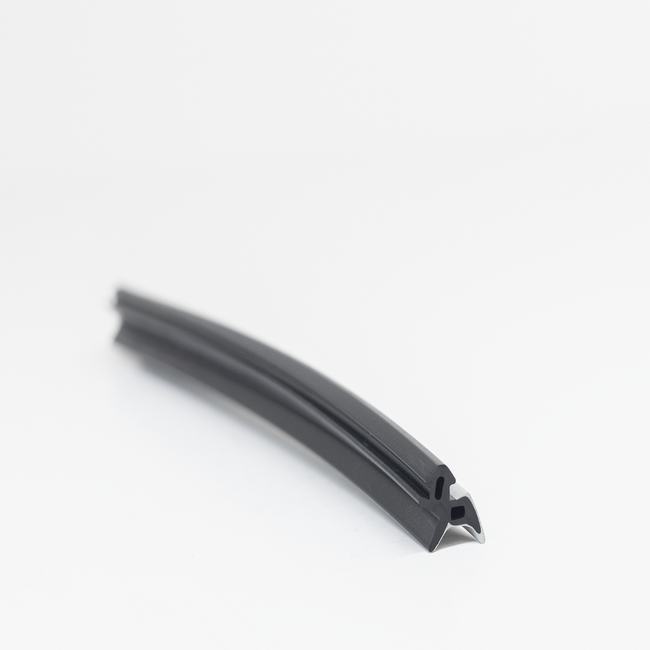Industrial seals are integral components used in a wide range of industrial applications to prevent leakage, contamination, and the ingress of external elements. These seals create a barrier between two mechanical components, ensuring that fluids, gases, or particulates remain contained within a system. Industrial seals come in various forms, materials, and designs, tailored to the specific requirements of different industrial processes. This comprehensive description will cover the types, functions, materials, installation, maintenance, and applications of industrial seals:
1. Types of Industrial Seals:
Industrial seals encompass a diverse array of types, each designed for specific applications. Common categories of industrial seals include:
a. Gasket Seals: Gaskets are typically flat or ring-shaped seals placed between two flange surfaces to create a static sealing connection. They are commonly used in piping, valves, and machinery.
b. O-Ring Seals: O-rings are circular elastomeric seals with a cross-section that forms a closed loop when installed. They are used to create dynamic and static seals in hydraulic and pneumatic systems, as well as in various mechanical applications.
c. Rotary Seals: Rotary seals, also known as oil seals, are designed to provide a dynamic seal between a rotating shaft and its housing. They are widely used in machinery and automotive applications.
d. Lip Seals: These seals have a flexible lip that contacts a rotating shaft, effectively sealing it to prevent the passage of contaminants or lubricants. They are often found in gearboxes, pumps, and engines.
e. Diaphragm Seals: Diaphragm seals consist of a flexible diaphragm that isolates a pressure-measuring instrument from the process media, ensuring that the instrument remains uncontaminated.
f. Mechanical Seals: Mechanical seals are used to prevent the leakage of liquids from pumps and agitators. They consist of two sliding faces that maintain contact under varying conditions.
g. Flange Seals: Flange seals, as the name suggests, are used to create a tight seal between flange faces, often in pipeline connections.
2. Functions:
Industrial seals serve a wide range of functions essential to the proper operation of industrial machinery and processes, including:
a. Leak Prevention: The primary role of industrial seals is to prevent the escape of fluids or gases, ensuring containment within a system.
b. Contamination Protection: Seals shield critical components from contamination, such as dust, dirt, moisture, or corrosive substances, which could compromise performance.
c. Friction Reduction: In rotating or moving parts, seals reduce friction and wear by maintaining a lubricating barrier, extending the life of components.
d. Pressure Retention: Seals maintain the integrity of pressure systems by preventing leaks or pressure loss.
e. Temperature Management: Certain seals are designed to withstand extreme temperatures and protect components from thermal stress.
3. Materials:
The choice of material for an industrial seal depends on factors such as the application, operating conditions, and compatibility with the process media. Common seal materials include:
a. Elastomers: Rubber-based materials like nitrile, silicone, and Viton are widely used for their flexibility and resistance to various chemicals.
b. PTFE (Polytetrafluoroethylene): Known for its excellent chemical resistance and low friction properties, PTFE is used in many industrial seals.
c. Metal: Stainless steel, brass, and aluminum may be used for durable seals that can withstand high temperatures and pressure.
d. Composites: Some seals are made from composite materials, combining the advantages of different materials to suit specific applications.
4. Installation:
Proper installation of industrial seals is crucial for their effective performance. Installation steps typically include:
a. Clean the Surfaces: Ensure that the surfaces where the seal will be installed are clean and free from contaminants.
b. Lubrication: Apply the appropriate lubricant if needed to minimize friction and aid in proper sealing.
c. Positioning: Place the seal in the correct position, aligning it with the components that need sealing.
d. Fastening: Secure the seal in place using the appropriate fasteners, adhesives, or other fixing methods.
5. Maintenance:
Regular maintenance of industrial seals is essential to ensure their longevity and continued functionality:
a. Inspection: Periodically inspect seals for wear, damage, or signs of failure.
b. Replacement: Replace seals that show signs of deterioration to avoid leaks or system malfunctions.
c. Lubrication: If the seals require lubrication, apply the recommended lubricant as part of routine maintenance.
6. Applications:
Industrial seals are used in a wide variety of industries and applications, including:
a. Manufacturing: In manufacturing processes, seals are employed in machinery, pumps, and valves to ensure the integrity of fluid and gas systems.
b. Automotive: Industrial seals are found in engines, transmissions, and suspension systems, contributing to vehicle performance and longevity.
c. Oil and Gas: Seals are used in pipelines, wellheads, and valves to contain potentially hazardous substances.
d. Aerospace: In the aerospace industry, seals are critical in aircraft engines, landing gear, and hydraulic systems.
e. Food and Beverage: Seals are used in food processing equipment to prevent contamination and ensure product safety.
f. Pharmaceuticals: In pharmaceutical manufacturing, seals are essential for maintaining the purity and sterility of processes.
g. Chemical Processing: Seals are used in chemical reactors, storage tanks, and pumps to prevent leaks and contamination.
h. Water Treatment: In water and wastewater treatment plants, seals are used in pumps, valves, and filtration systems.
In conclusion, industrial seals play a vital role in maintaining the efficiency, safety, and integrity of industrial processes and machinery. The choice of the appropriate seal type and material, along with proper installation and maintenance, is essential to ensure the effective operation of these critical components in various industrial sectors.










